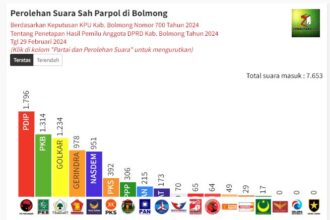MANADO, ZONAUTARA.com – Near GMIM Sentrum Church, Manado, there is a small waruga. Where, this waruga is not like another waruga in Manado City, which are large, both the stone as a part of waruga’s body and the cup cover.
This condition, of course attracted some citizens, because in addition small form, also there are no traits that can be show the identity of ancestors, who are buried inside the waruga.
The information successfully summarized by Zona Utara journalists from some residents around the site, explained that they knew the waruga had been there for a long time ago.
“According to information, that waruga was previously located in the location of Hospital Wenang (Hotel Peninzula for this current time), then moved near church,” explained Chairman of Waraney Puser In Tana, Toar Lumimuut John Pandeiroth.
According to Pandeiroth, he himself did not know exactly why the old waruga was moved.
” To be more clarity it is better to search information to humanist and intellectuals, related to the identity of the ancestors buried in it. But, we will still keep and respect it, moreover waruga is loaded with local wisdom values of ethnic Minahasa,” explained Pandeiroth.
Meanwhile, a resident who lives in the near the location, Fenny Lontoh said, waruga has a very high historical value, because many visitors had visited this waruga.
“I often see a group of people who come to visit at the place at night, giving reverence and held a ritual,” said Lontoh.
After that, Zona Utara journalists meets an academics of University of Sam Ratulangi University, who is also a observer of Minahasa culture, he is Reymond Sumampouw.
According Sumampouw, waruga is a cultural site, which has a very important meaning, especially related to the occurencet of Manado City.
“Through customary rituals we have ever done, especially with a person who has the gift of hearing instructions through the whisperings of the ancestors (Pakewiten), mentioned that people who buried in the old tomb is mentioned with the word” Ina na (mother), “Sumamapouw explained.
He explains, the statement of “Ina na” refers to Tumani (pioneer/opener) Ruru Ares (District Ares) old, namely Dotu Lolong Lasut. Where, Ruru Ares is a old name of Manado.
“Around the 1400s, according to the history, Dotu Lolong Lasut moved from Walak Lotta, and with his family (including his mother) and some of his followers heading to what is known as Taman Kesatuan Bangsa (TKB),” he explained .
Arrived at the place, Lolong Lasut with his followers cleaned the weeds (Kumaskas Duaya), then, set up a place to live. The place was finally called Ruru Ares.
Predicted, in that time mother Dotu Lolong Lasut died and then buried. According to Sumampouw, Dotu Lolong Lasut’s mother had very old when died, so that her body has shrunk and bent, therefore the form of waruga is small.
“Although we already get a clue, that it was the grave of his mother Dotu Lolong Lasut, but we do not know the name of his mother,” Sumampouw concluded.
It is known that around the IX century, the burial tradition of the Minahasa tribe, the body was seated heels attached to the buttocks, then placed in waruga. The sitting position of the corpse is facing to the north. It is meaning that ancestor of Minahasa tribe come from Northern.
But in 1860, the Dutch Government began to ban such a way of burial. Around the year 1870, the burial system uses coffins began to be used Minahasa, replacing waruga. The reason because spread various diseases, including typhoid and cholera.
The Dutch government suspect, the outbreak of the disease that came from the bodies of citizens who came out through the gap between the container and cover waruga.
Editor: Eva Aruperes










